|
Detroit
Diesel Division of General
Motors Corporation in World War Two / WWII
Detroit, MI
1908-Current
This page added 1-3-2016.
"The Power to Win"
Detroit Diesel Division
This World War Two
publication, published by the Detroit Diesel Division of General Motors,
tells the important story of service after the engines left the
manufacturing plant. All engines, at one time or another, need to
be repaired due to normal wear of the engine's parts. In wartime, engine
service is even more important, as the engines are used
beyond their expected usage rates while performing in combat zones.
The description of the service organizations
required and education provided for the service of the engines by
military personnel was repeated not only by other GM Divisions, but many
other companies providing technical products during WWII.
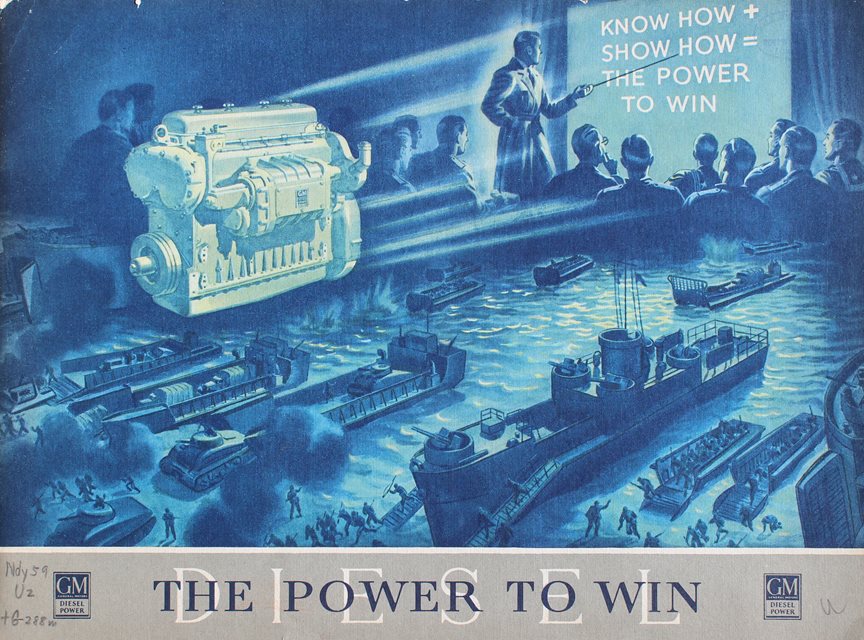
The cover of the "Power to Win" emphasizes
the importance of Detroit Diesel in powering various landing craft using its diesel engines during WWII. Detroit
Diesel engines were installed in 47,881 landing
craft during the conflict. All eleven different types of landing craft
used by the US military in World War Two
utilized the 6-71 engine. The basic 6-71 engine was the the US
Navy's engine of choice for powering landing craft; and the most important engine of
its type for naval usage in WWII.
Author's note: In a couple of the photos
below, several types of landing craft are incorrectly described as "amphibians".
Amphibians were able to operate on both land and water, while landing craft could not. In the Navy, the
landing craft were part of an amphibious task force, which is where the
confusion may lie.
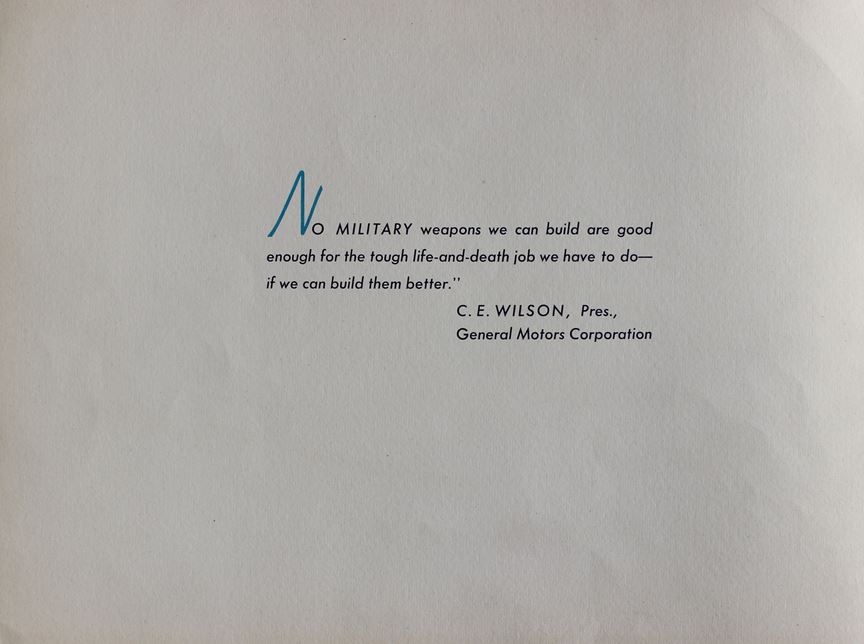
Before going to Detroit and eventually
becoming President of General Motors, C.E. Wilson was the General
Manager of the Delco-Remy Division in Anderson, IN.
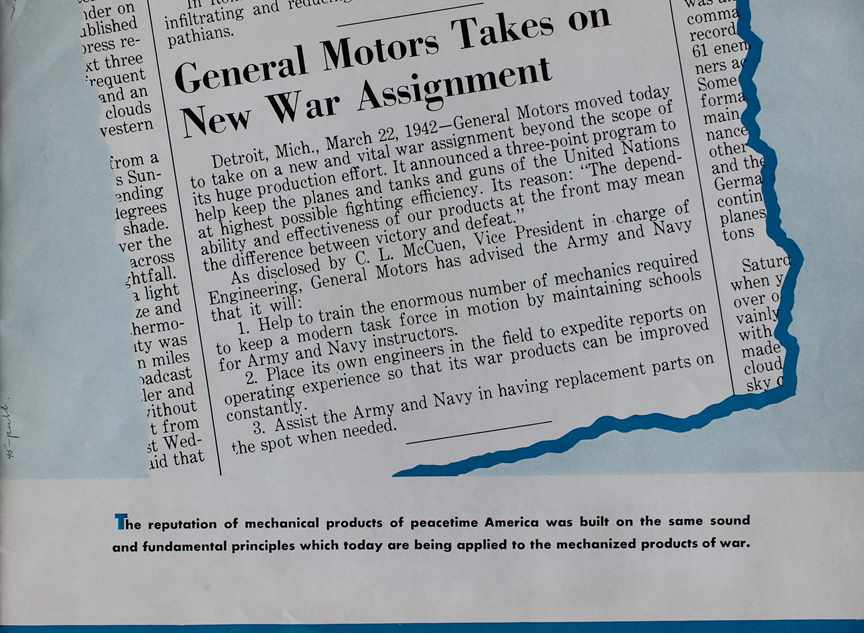
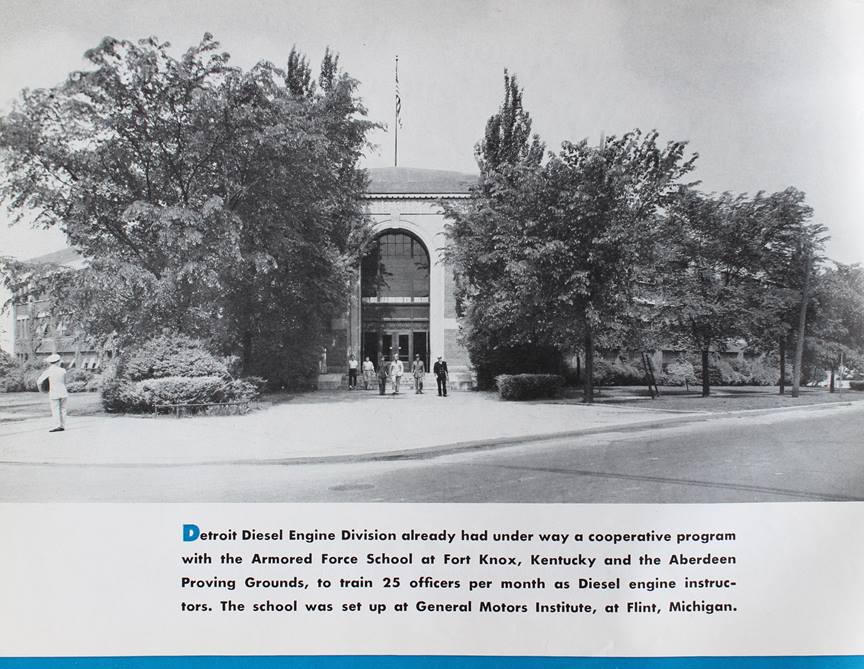
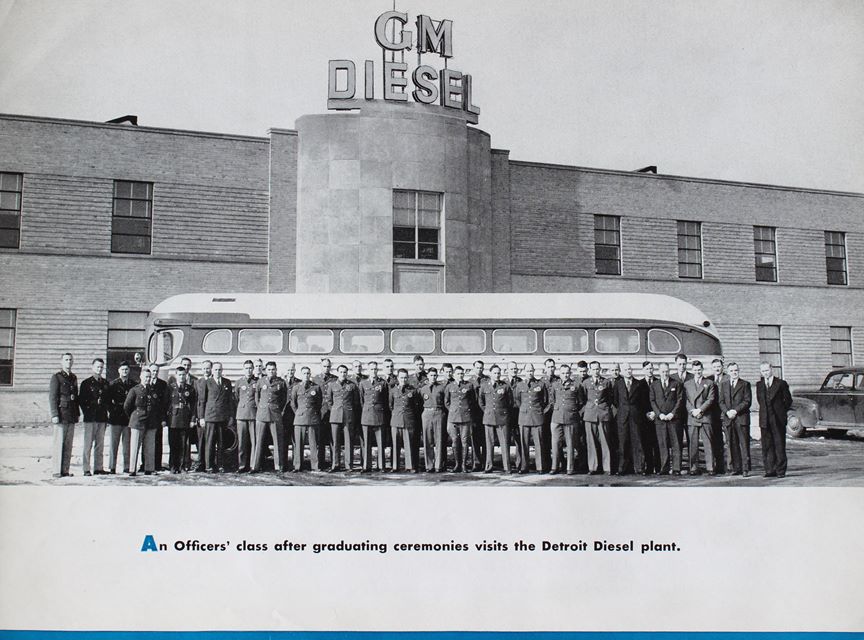
Note that while the Division is identified
as Detroit Diesel in the description above, the plant is actually
identified as GM Diesel, as is the cover of this booklet. While
the Division was trying to assert its individual identity, the
Corporation was working to have its entire three diesel producing divisions lumped
under the Corporate banner.
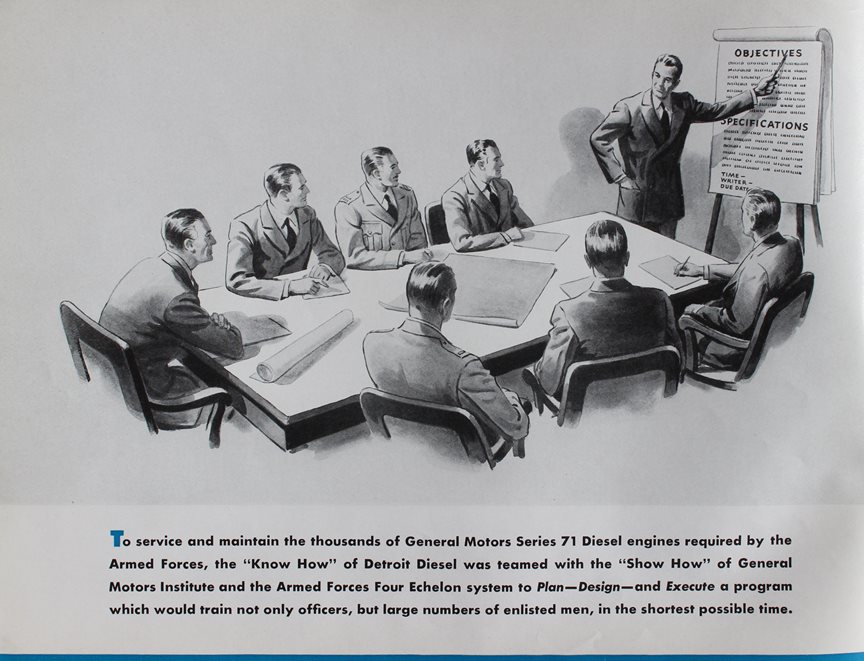
In GM, everyone had to have a meeting.
At times myself and others went to so many meetings that it was
difficult to get our assigned work completed. Then, there had to be meetings to
determine why nothing was getting done!
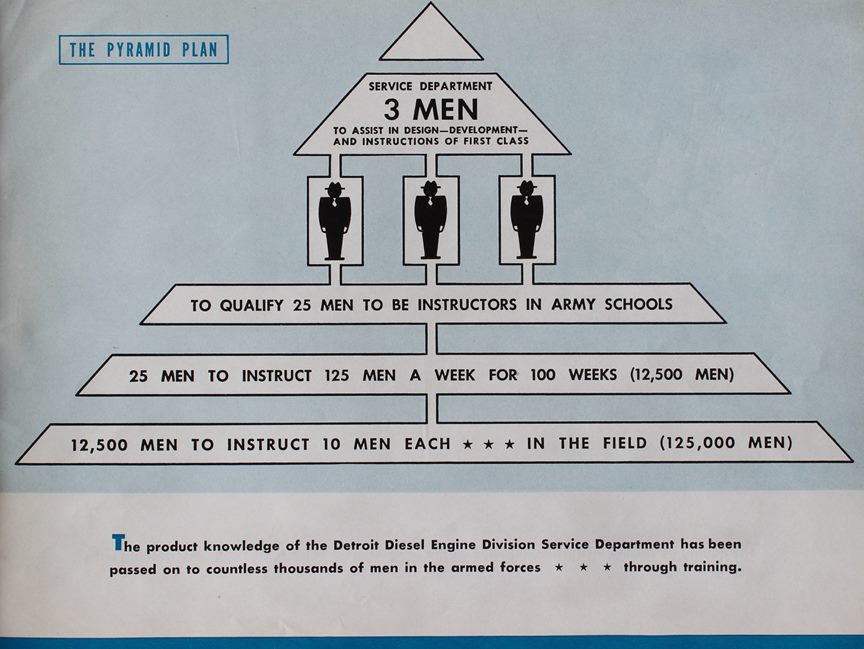
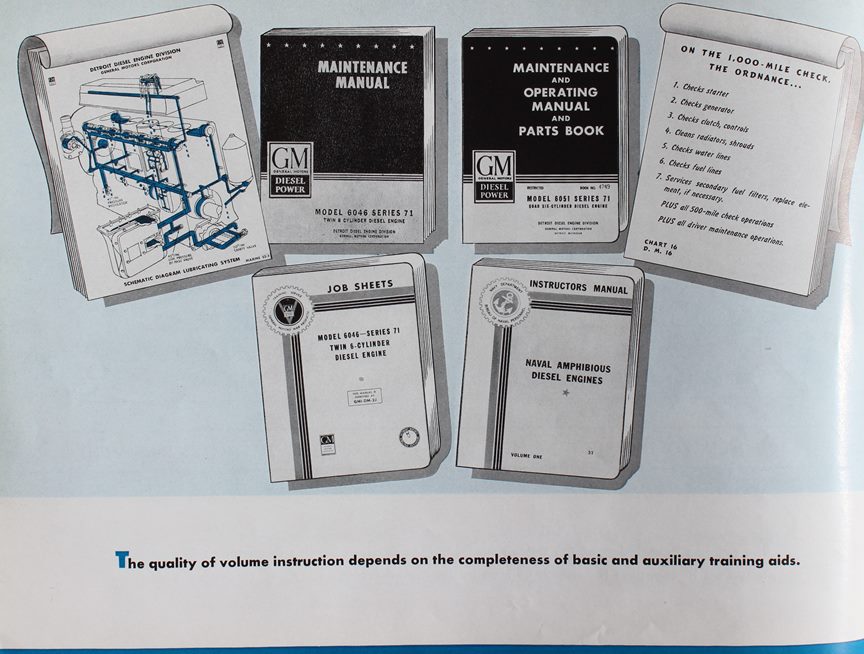
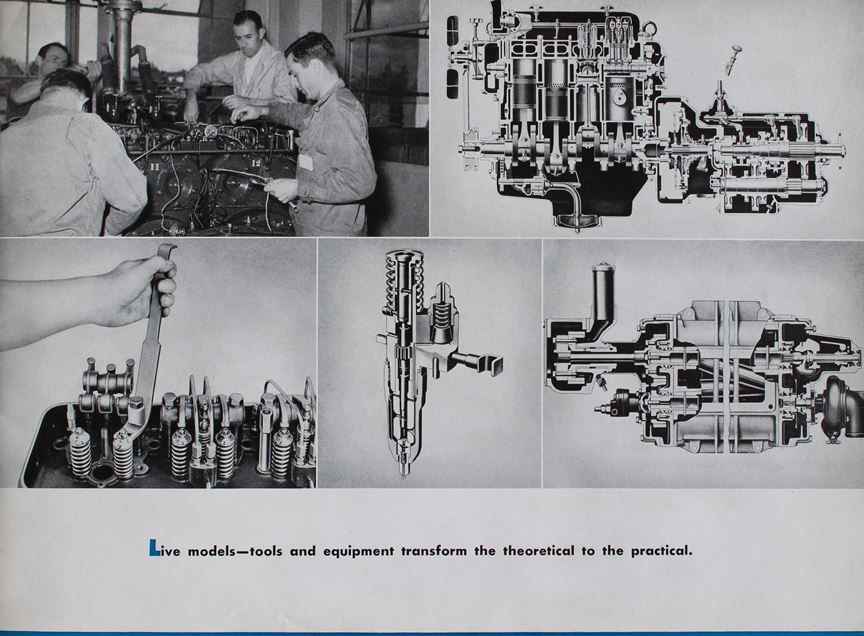
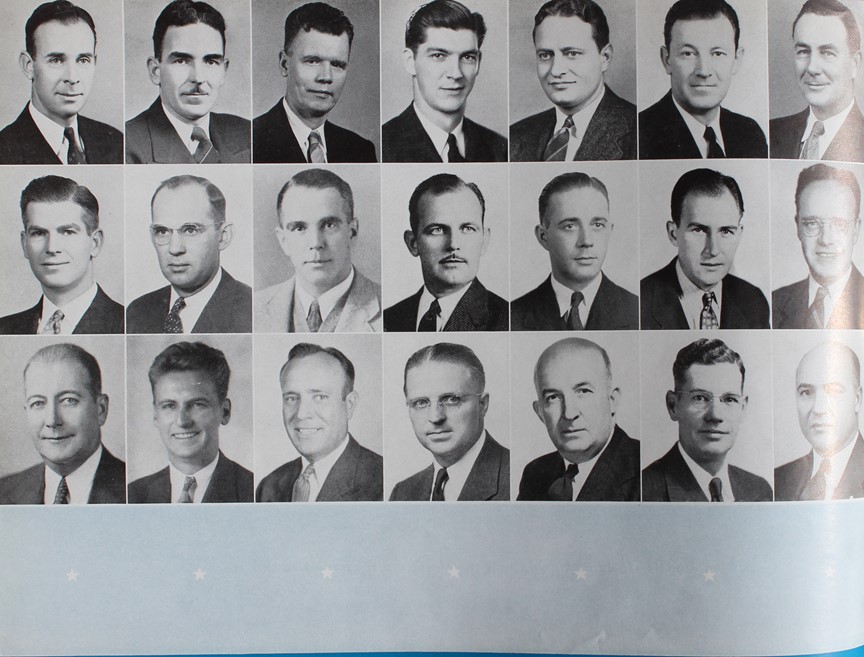
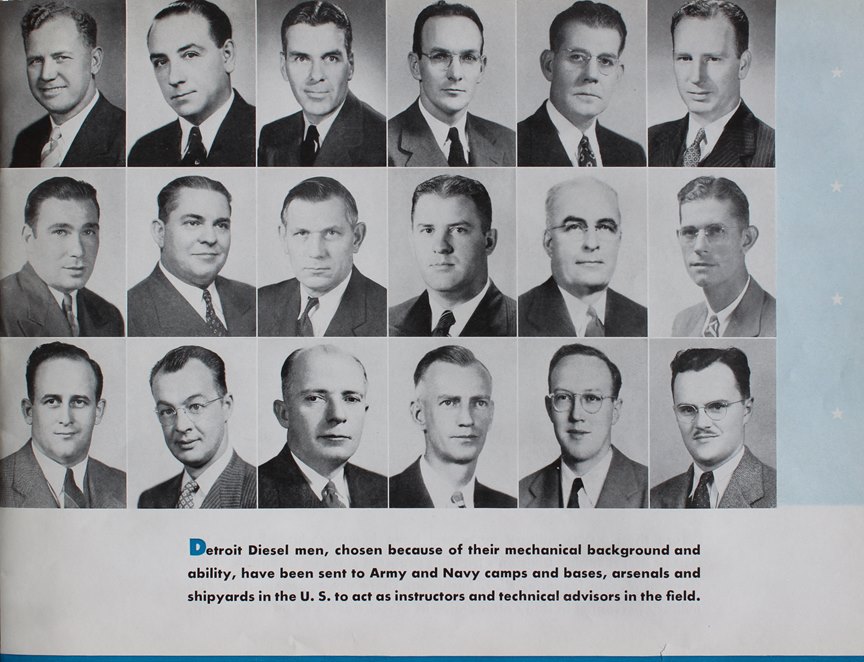
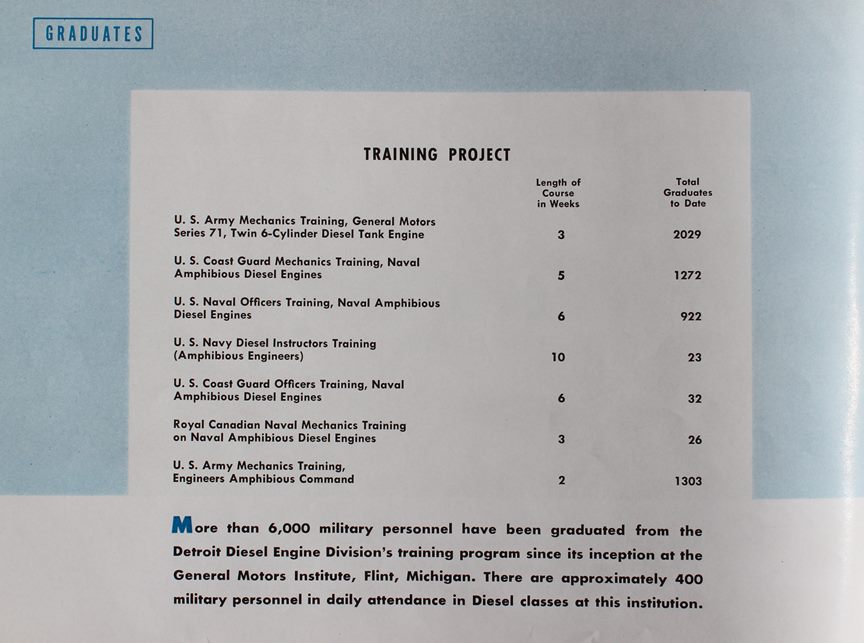
It is interesting that there is such a large
number of Army mechanics trained on the twin Diesel tank engine, which
was used in the M4A2 Sherman tank and the M10 Wolverine tank destroyer.
With the exception of a few M4A2s that served with the US Army in Burma,
and a small number with the US Marines in the Pacific, the rest of the
diesel powered M4A2s were given to US allies under Lend-Lease.
There were only the 5,368 M10 tank destroyers for the Army mechanics to
work on.
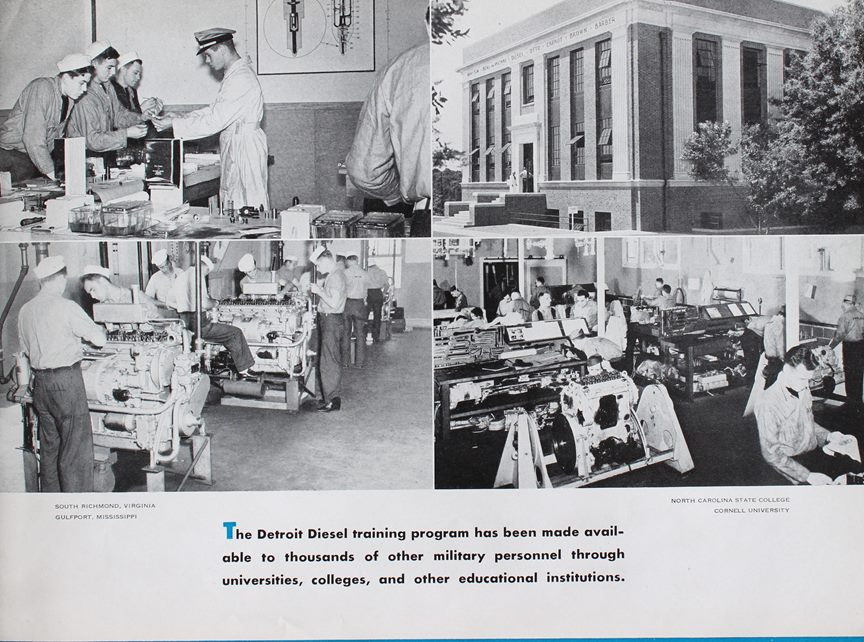
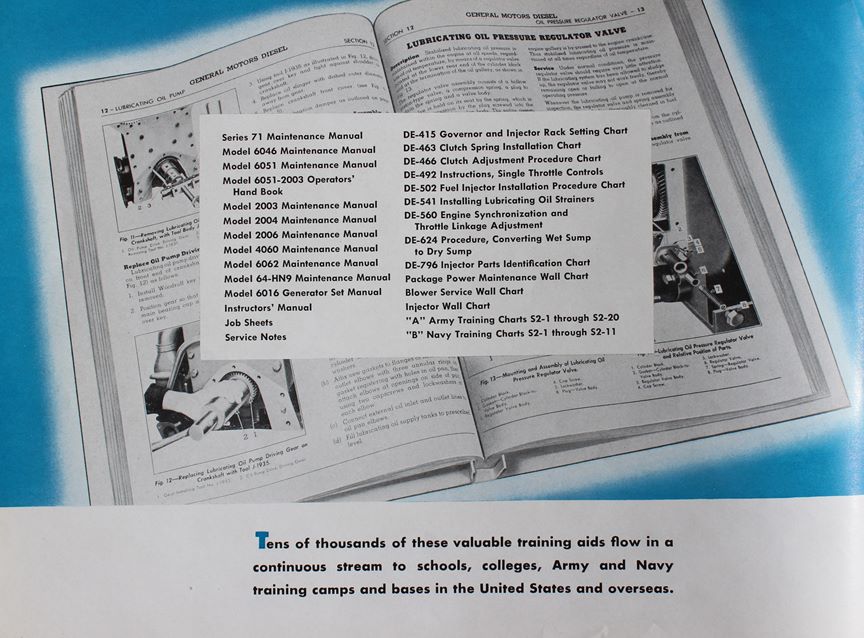
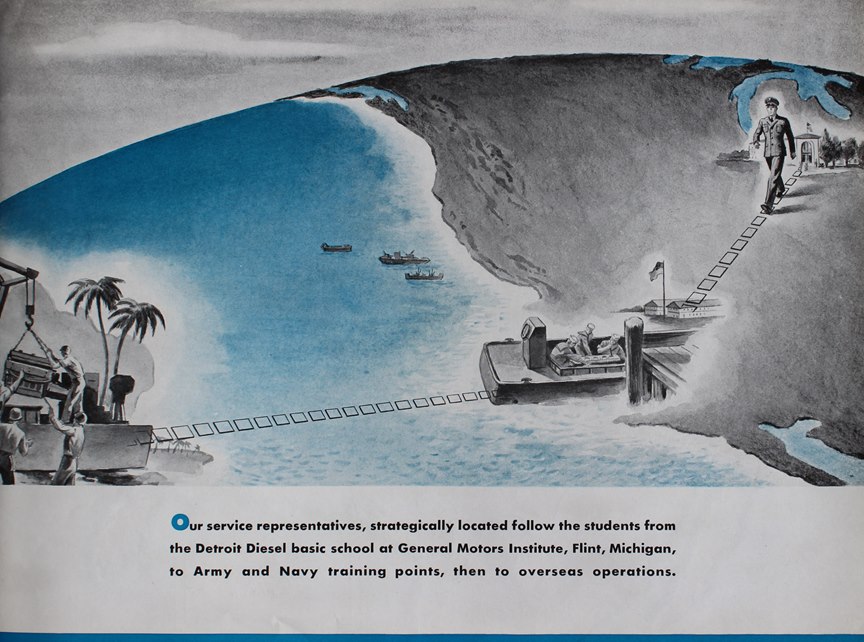
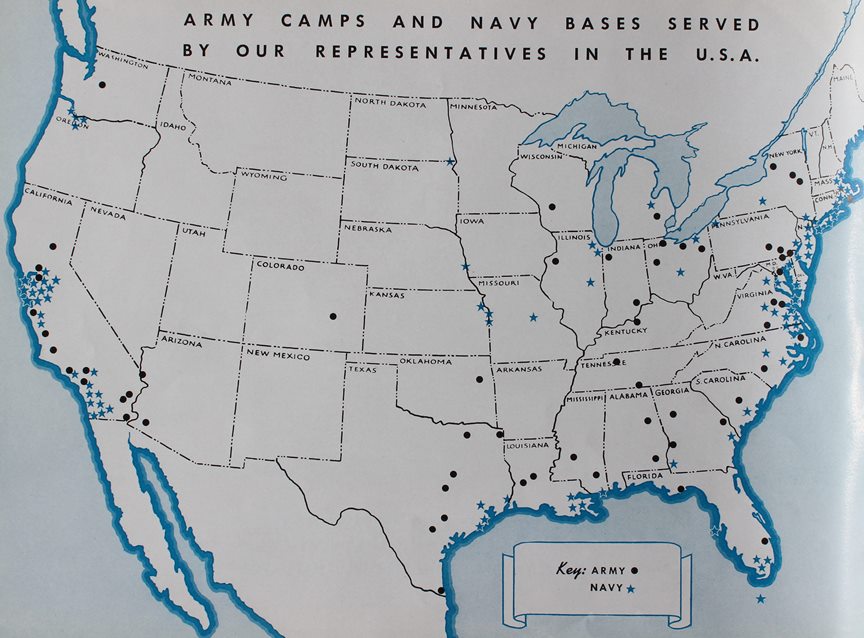
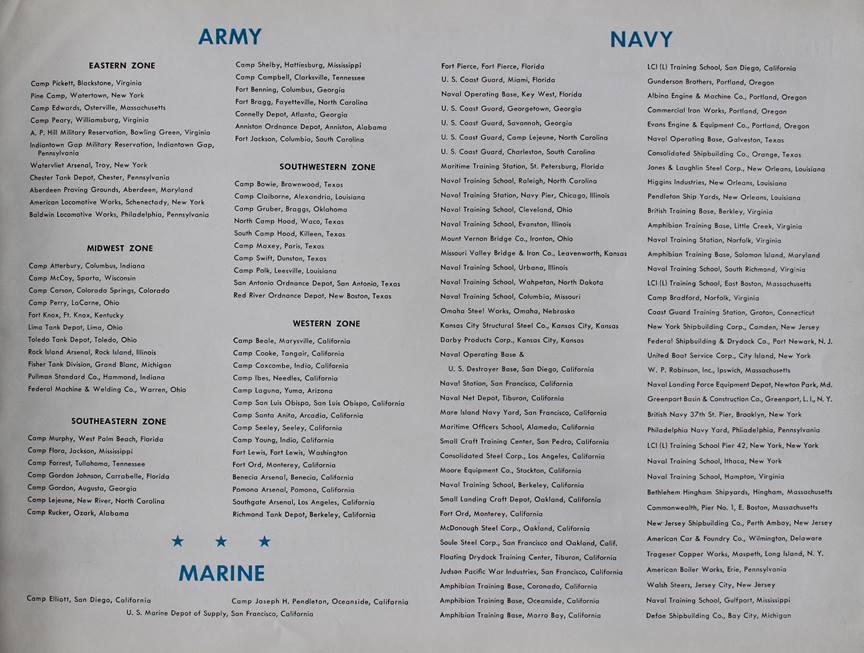
Detroit Diesel technical representatives
serviced over 60 US Army forts and camps, over 80 Navy and Coast Guard
bases and three Marine camps in the United States during WWII.
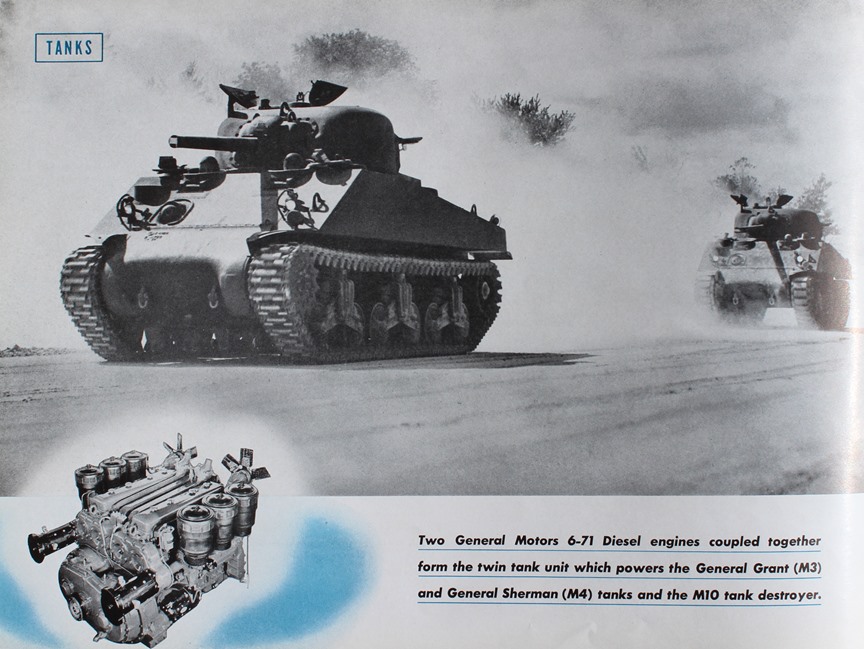
Most of the work by US Army
mechanics, as noted above, would have been on the M10 tank destroyers. The photo of
the engine shows the two 6-71 engines joined together into what was
designated the 4046 twin diesel engine.
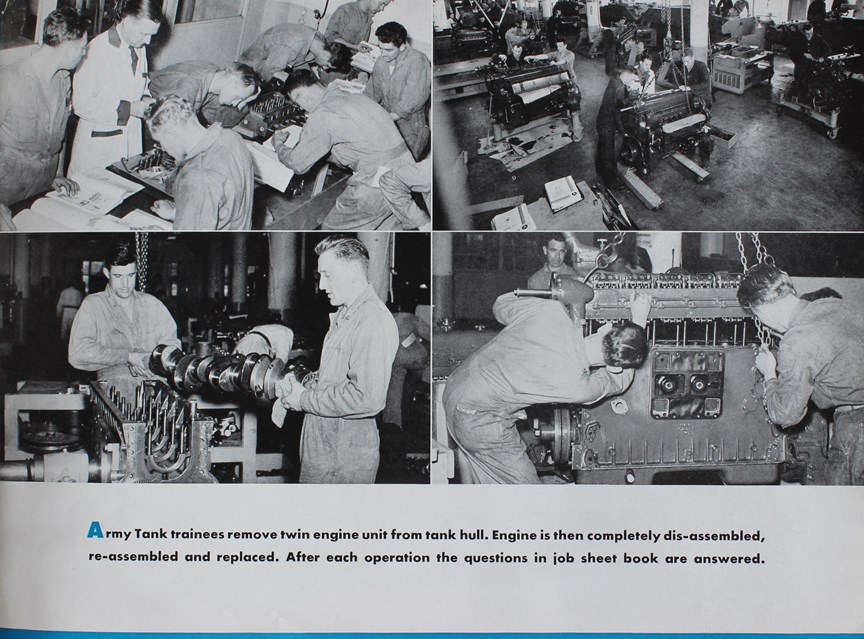
This is the first of many photos showing
military personnel working on Detroit Diesel engines. In this and
other photos below one can see many parts of the 6-71 engine in
disassembly.
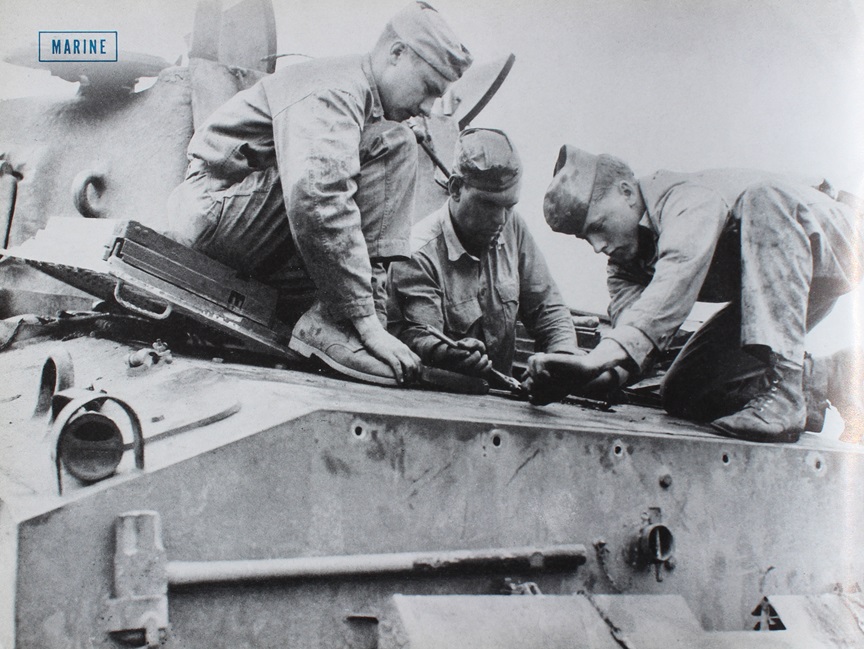
The Marines here are working
on an M4A2 Detroit Diesel powered tank.
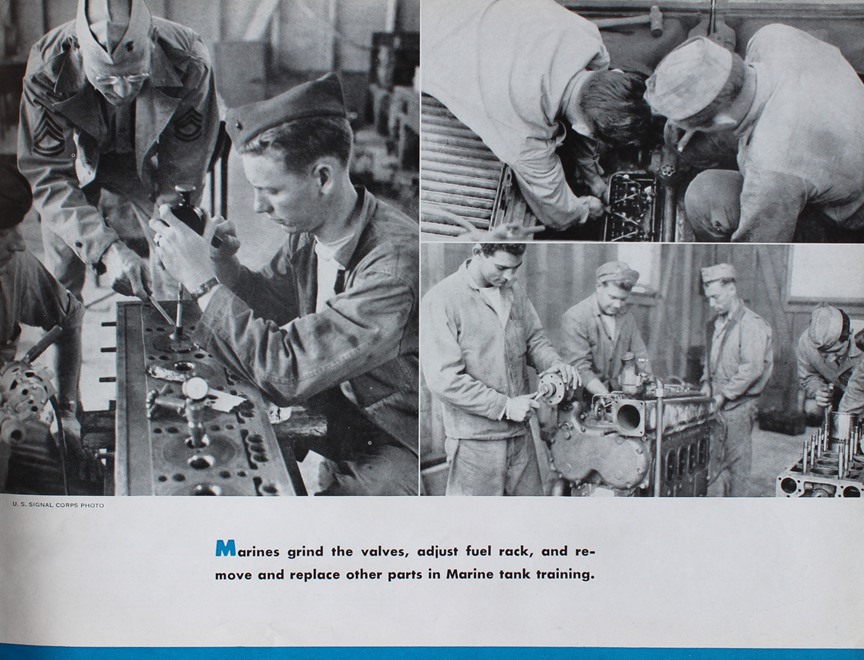
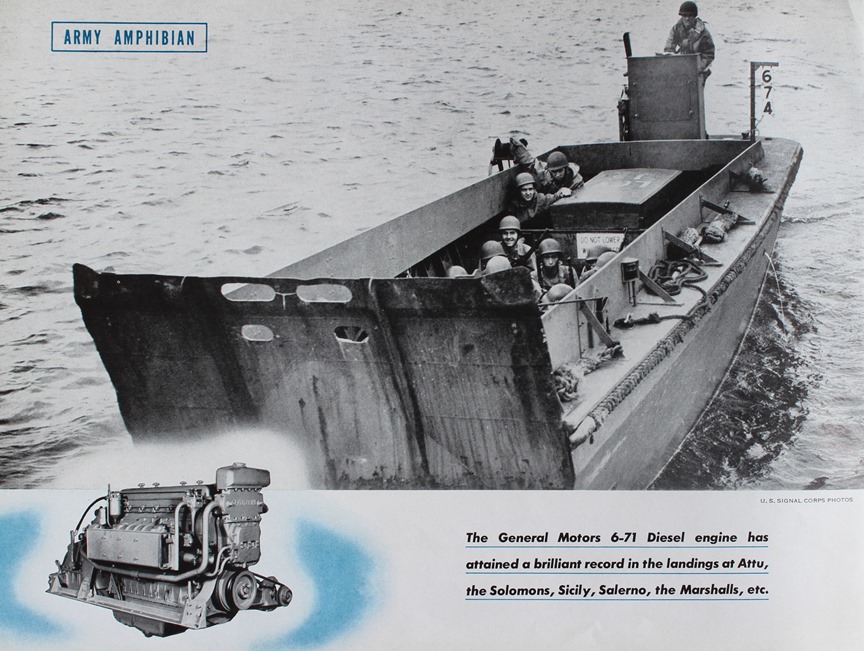
This is not an amphibian, but a small
watercraft designed to unload its cargo at the waterline. The US
Army actually had its own Navy during WWII which included Landing Craft,
Mechanized, or LCM as seen here.
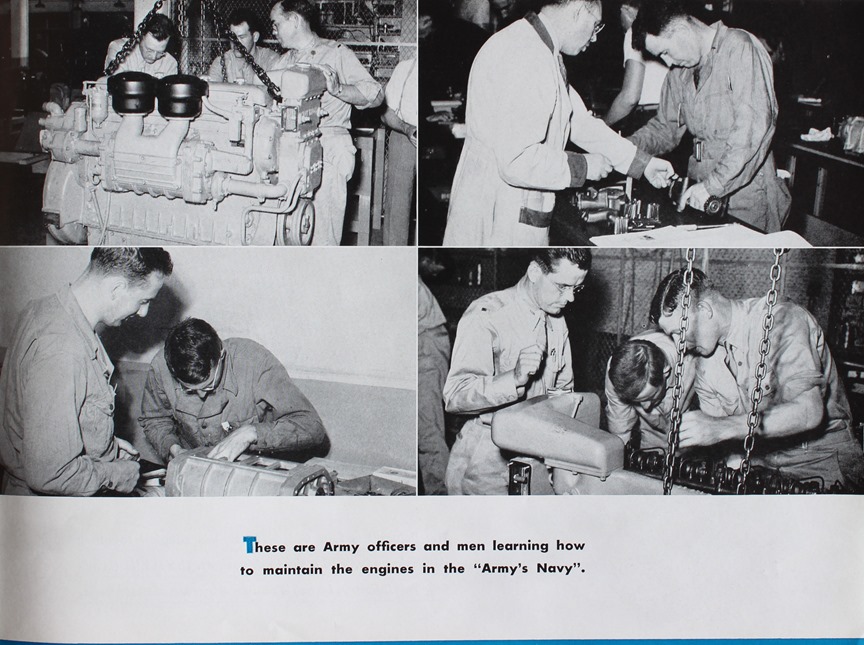
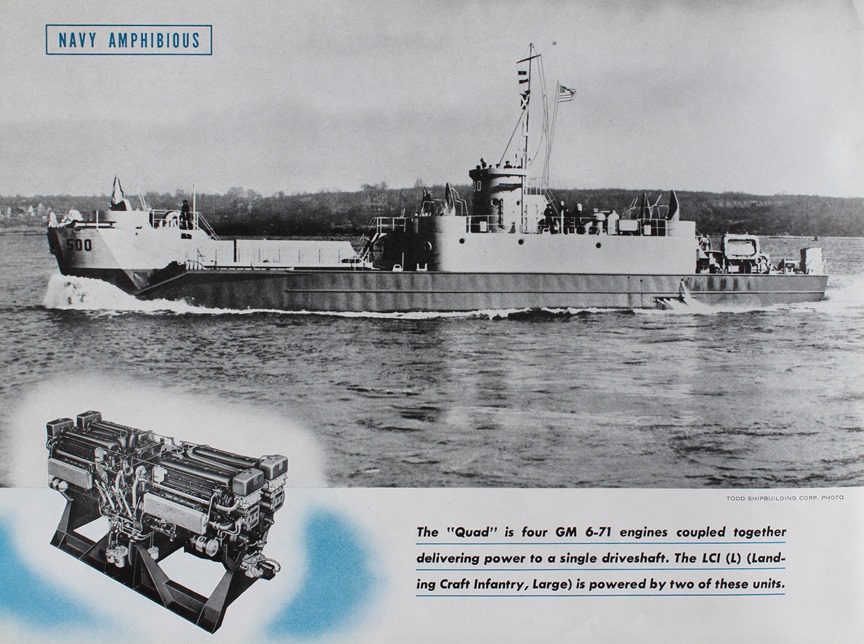
The Landing Craft Infantry, or LCI, was
powered by four 6-71 engines joined together in what was called the
Quad. Two powered each LCI. The LCI could carry an infantry company and deliver it
directly to the beach.
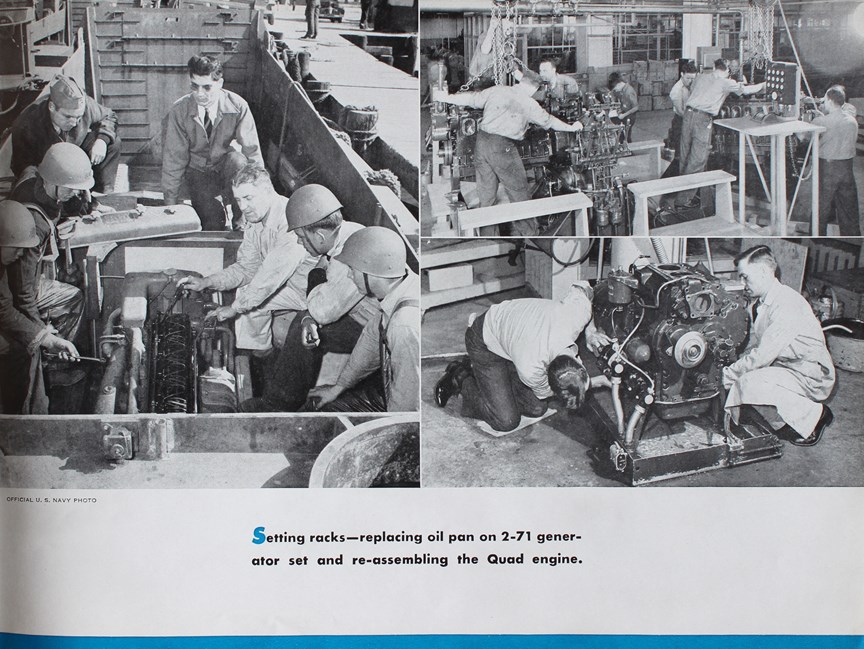
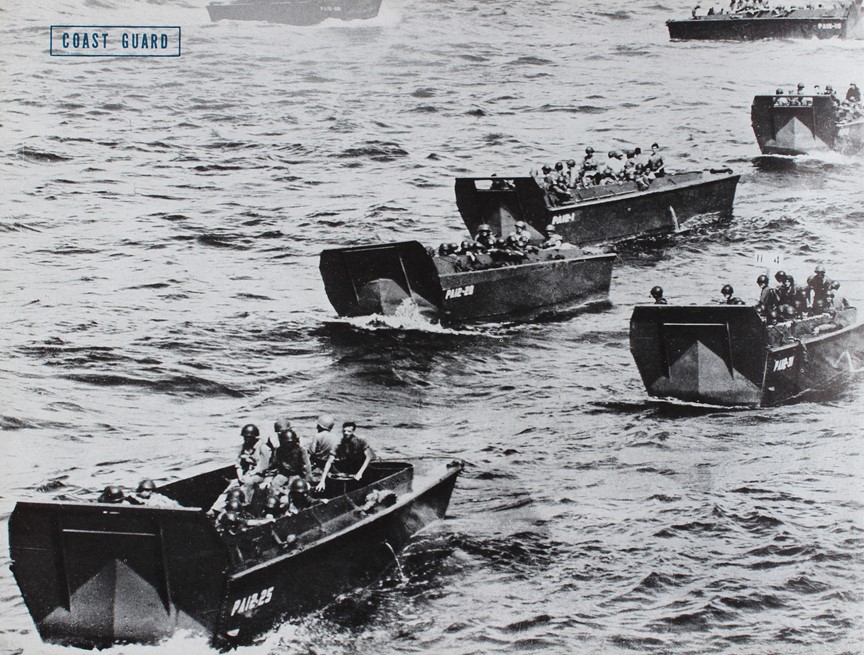
The US Coast Guard
operated the famous Higgins boats, or Landing Craft, Personnel Vehicles,
or LCVPs. These were the assault boats that made the initial
landings under fire on many beaches during WWII. Each was powered
by one Detroit Diesel 6-71 marine engine.
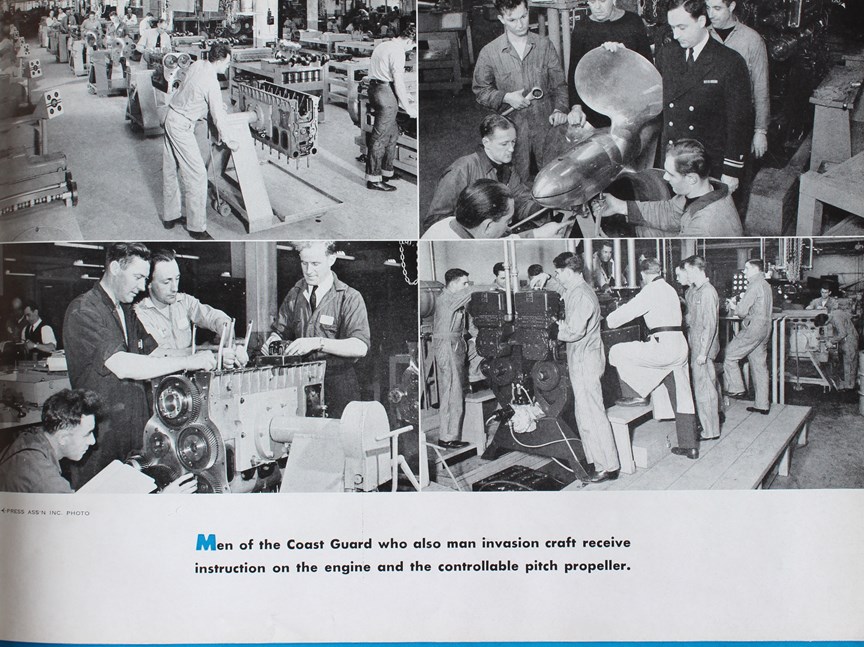
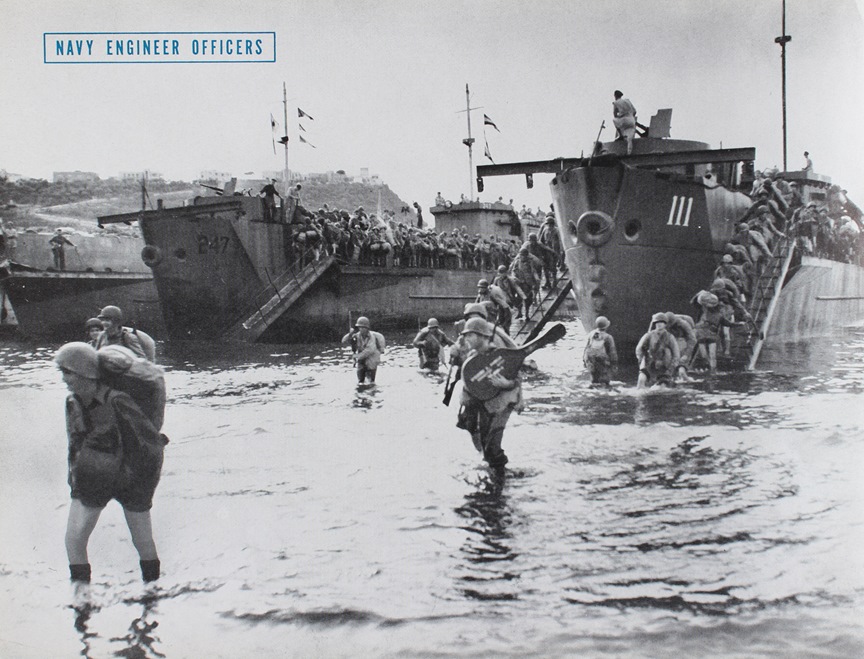
The Navy Engineers are being landed from
LCIs, powered by two Detroit Diesel Quad engines. Obviously this is a non-combat area, if the one sailor can land with a guitar rather than a
rifle!
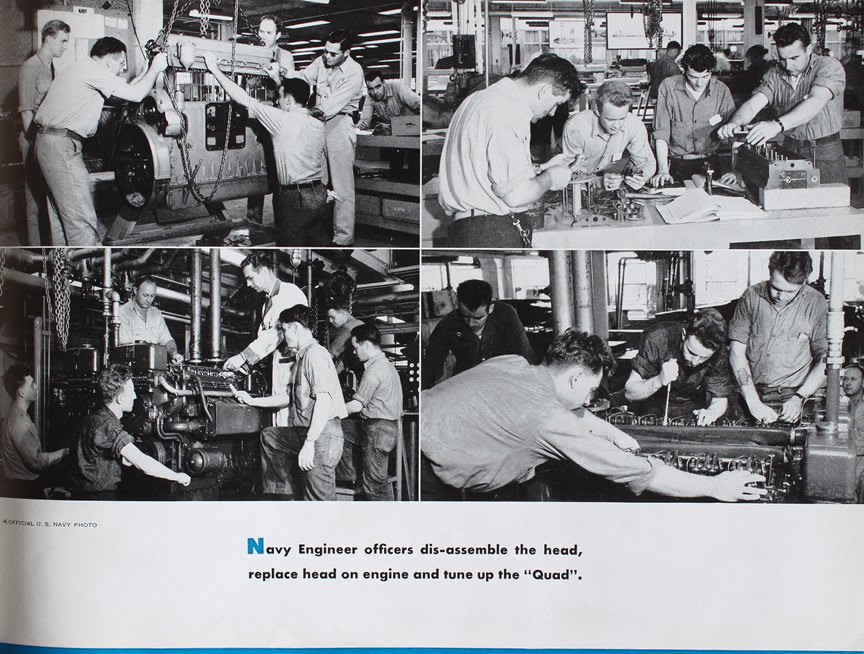
The term "officer" is misused here as these
are enlisted men working on the engines, not officers. Unlike
officers, enlisted men have to work for a living!
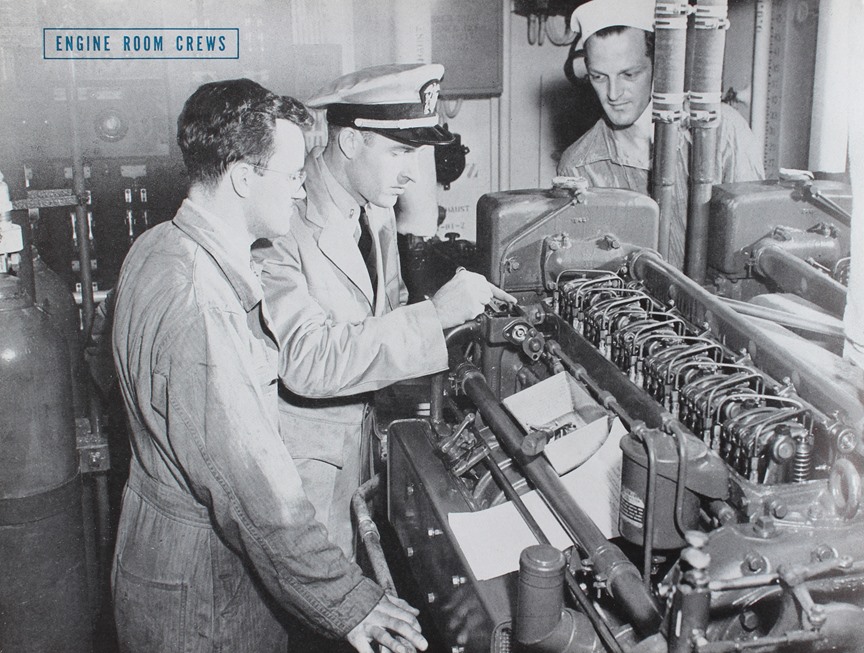
This is a Quad in the engine room of an LCI
and gives an excellent view of the rockers and valve springs on the
6-71.
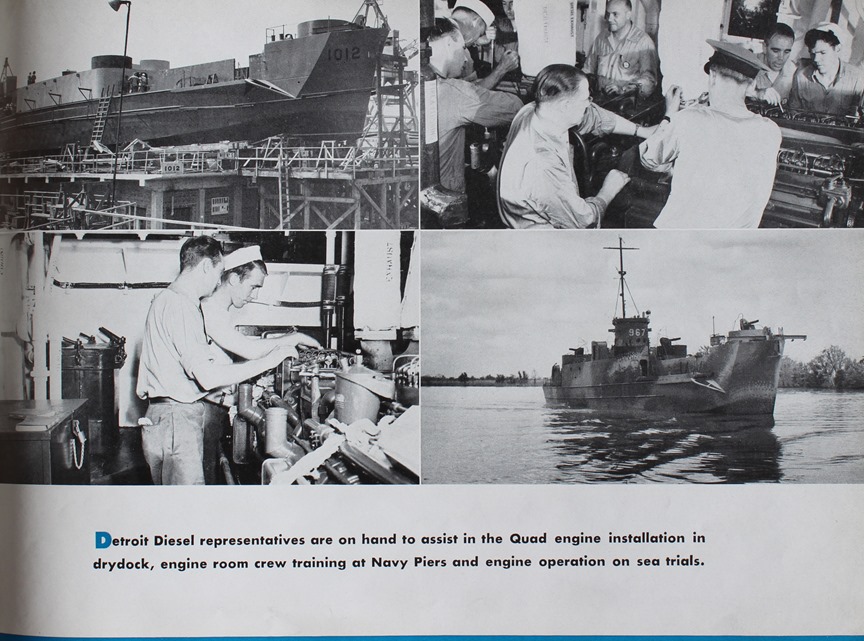
During WWII 923 LCIs were built. Each
one had two of the Detroit Diesel Quads for providing power to the
ship's two propellers. The Quad engine was designated the 6051 in
Detroit Diesel nomenclature.
To provide electrical service to the ship, two Detroit Diesel 2-71 two
cylinder engines ran 20 kw generators.
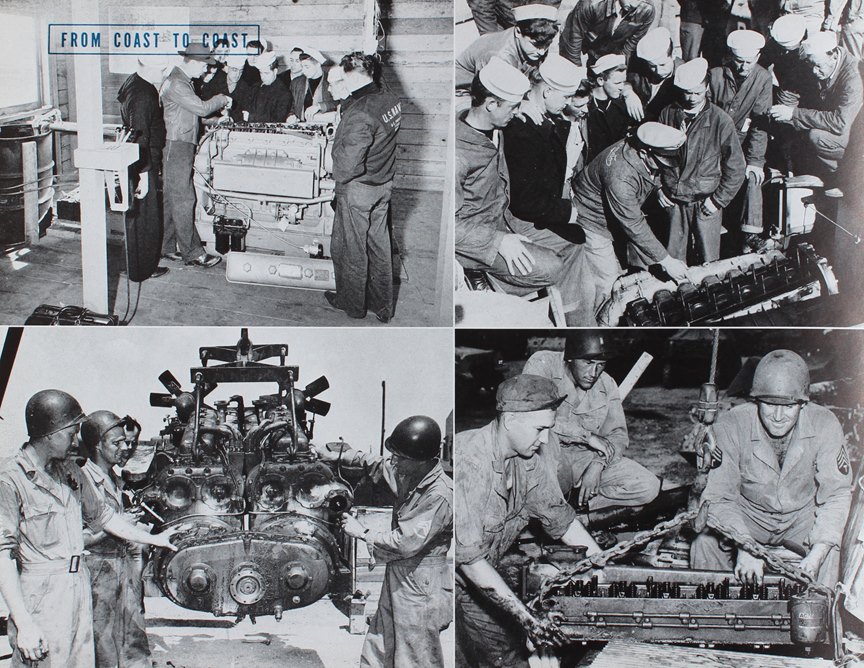
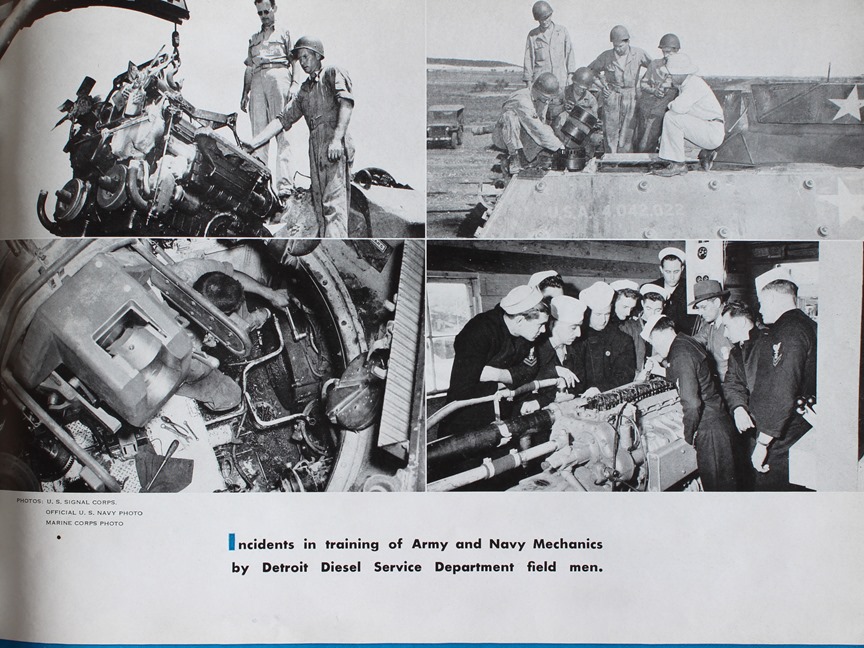
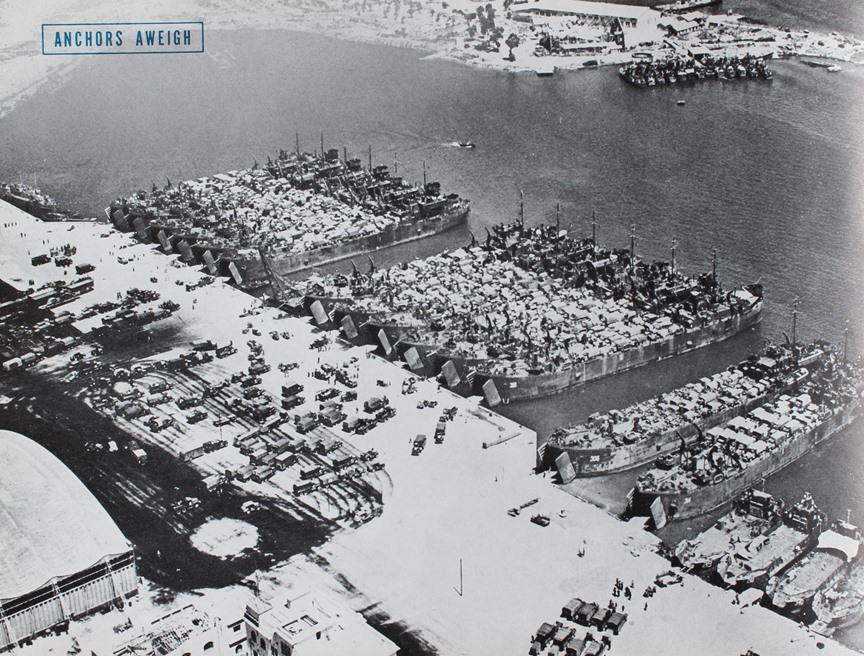
Fourteen Landing Ship Tanks, or LSTs, along
with three Landing Craft Tanks, or LCTs, can be seen loading for the next
combat landing at a supply base. The LSTs were powered by GM
Electro-Motive diesel engines. But each LST had three Detroit Diesel
6-71 engines coupled to generators to supply ship's electrical power.
Each LCT was powered by three Detroit Diesel 6-71s; each one driving a
propeller.
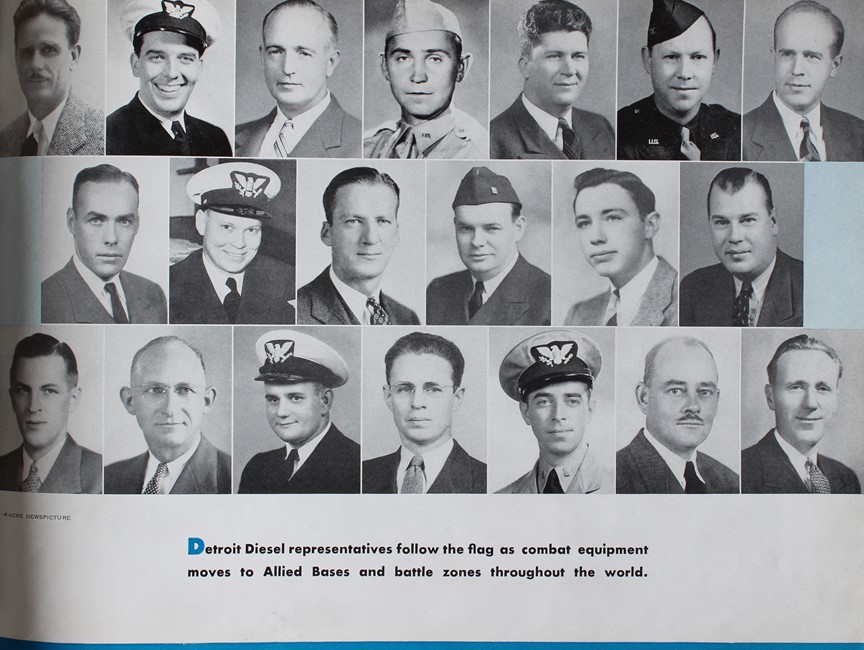
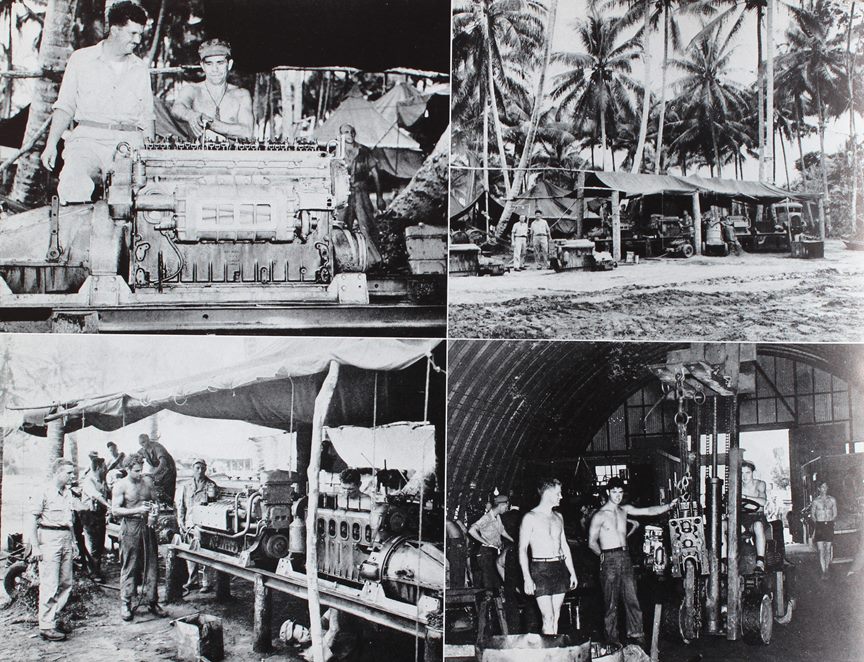
More great photos of Detroit Diesel 6-71
engines under going maintenance in the field.
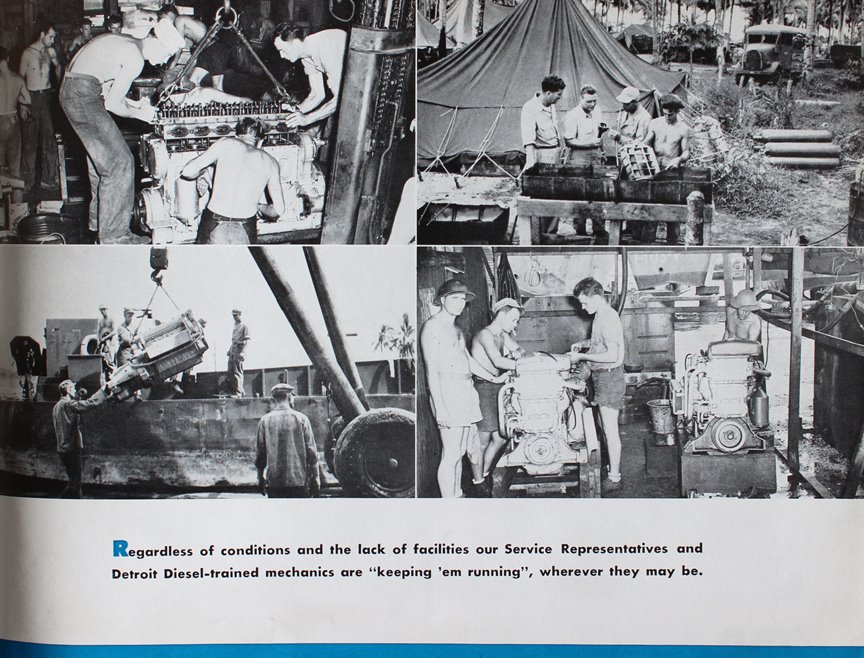
For every combat soldier on the front line,
there are ten others behind the line supporting his effort. Many
were mechanics keeping the Detroit Diesel 6-71 engines in top running
order for tanks, tank destroyers and landing craft.
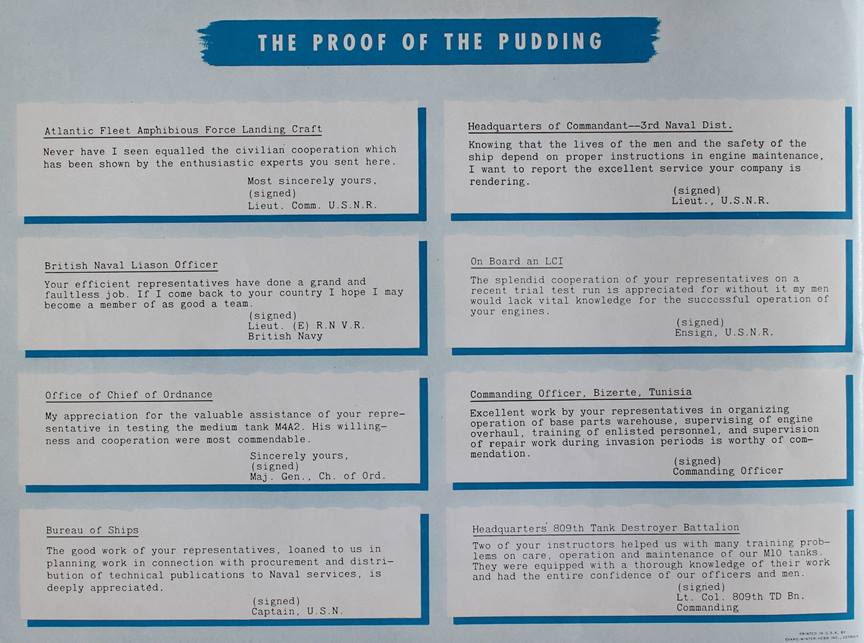
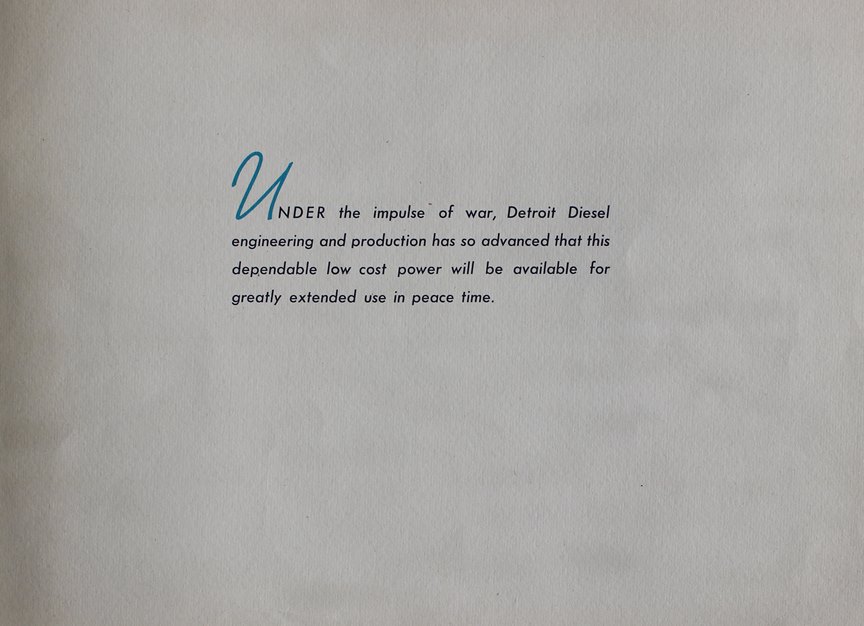
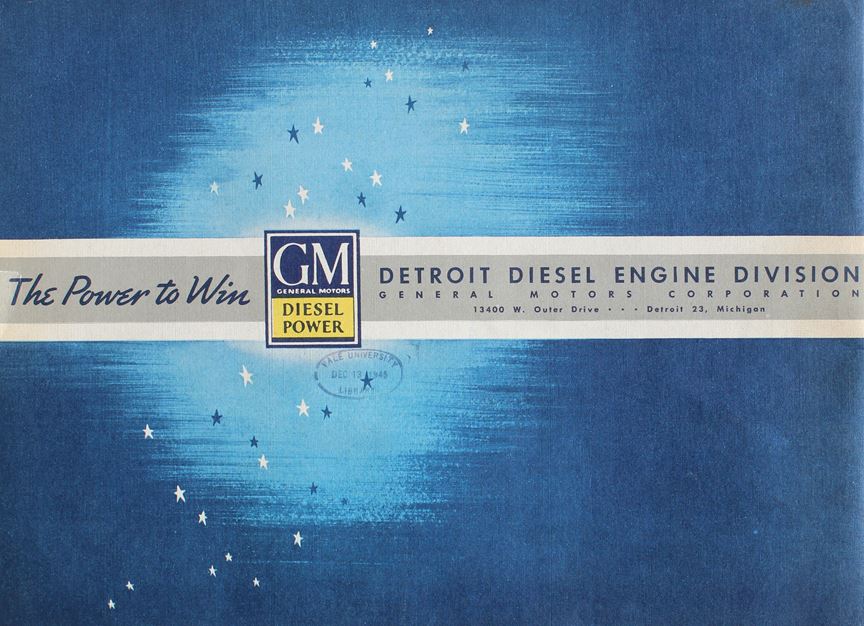
Return to Detroit
Diesel Main page.
|







































